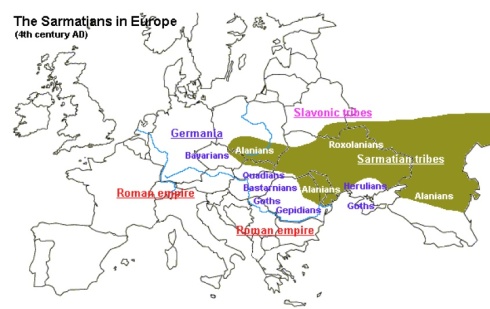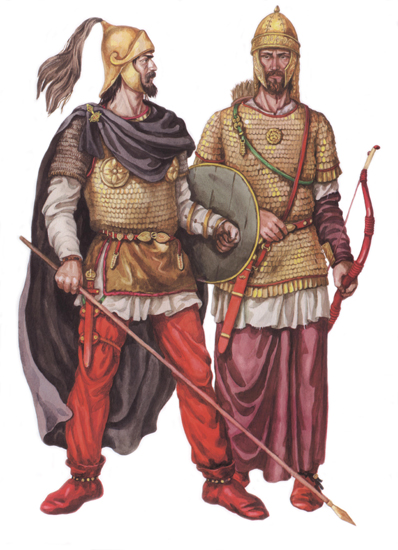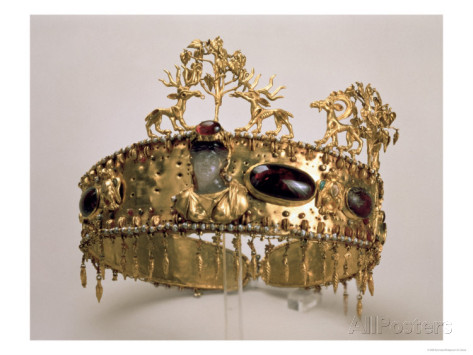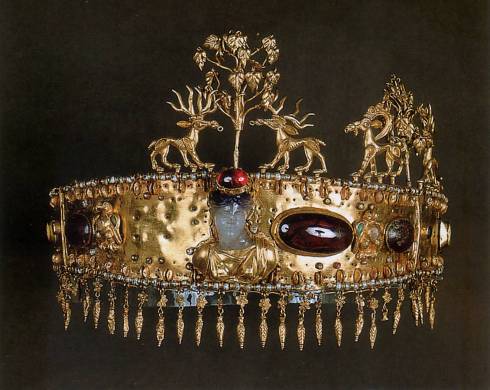You are currently browsing the tag archive for the ‘Pontic-Caspian’ tag.
To celebrate the spooky season, we have been recounting the various fates of the brood of monsters descended from Echidna. While doing so, one aspect of the story has become glaringly apparent: more than half of the family of monsters was defeated by Hercules. Cerberus, Ladon, Orthrus, the Nemean Lion, the Hydra, the great Caucasian Eagle…the demigod bested them all as he bludgeoned and ripped his shining path through the world. (I haven’t told the tale of Orthrus, the two headed dog who was best friend to the three-headed monster Geryon: suffice to say, during his tenth labor, Hercules killed the poor pooch.) One would expect a devoted mother to be enraged and thirst for vengeance. However there is a story about Hercules and Echidna meeting, and it seems the mother of monsters desired something very different from revenge. I’ll turn the storytelling over to Herodotus. It is worth remembering that while people call Herodotus “the father of history”, historians call him “the father of lies”. He tells a great many thrilling stories but he probably made them up while he was binge drinking in his library…. Anyway, here is the passage from Book IV of the Histories of Herodotus (translated by George Rawlinson):
Hercules came from thence into the region now called Scythia, and, being overtaken by storm and frost, drew his lion’s skin about him, and fell fast asleep. While he slept, his mares, which he had loosed from his chariot to graze, by some wonderful chance disappeared. On waking, he went in quest of them, and, after wandering over the whole country, came at last to the district called “the Woodland,” where he found in a cave a strange being, between a maiden and a serpent, whose form from the waist upwards was like that of a woman, while all below was like a snake. He looked at her wonderingly; but nevertheless inquired, whether she had chanced to see his strayed mares anywhere. She answered him, “Yes, and they were now in her keeping; but never would she consent to give them back, unless he took her for his mistress.” So Hercules, to get his mares back, agreed; but afterwards she put him off and delayed restoring the mares, since she wished to keep him with her as long as possible. He, on the other hand, was only anxious to secure them and to get away. At last, when she gave them up, she said to him, “When thy mares strayed hither, it was I who saved them for thee: now thou hast paid their salvage; for lo! I bear in my womb three sons of thine. Tell me therefore when thy sons grow up, what must I do with them? Wouldst thou wish that I should settle them here in this land, whereof I am mistress, or shall I send them to thee?” Thus questioned, they say, Hercules answered, “When the lads have grown to manhood, do thus, and assuredly thou wilt not err. Watch them, and when thou seest one of them bend this bow as I now bend it, and gird himself with this girdle thus, choose him to remain in the land. Those who fail in the trial, send away. Thus wilt thou at once please thyself and obey me.”
Two of Echidna’s human children by Hercules proved to be disappointments and were sent away, but Skythes, the youngest son was indeed capable of wielding Hercules’ bow. Skythes stayed in the land, became its king, and fathered the race of the Scythians, a (real) tribe of people whom the ancient Greeks regarded as being descended from union of the the greatest Greek hero and a primordial monster! People who are familiar with the Scythians will be yelling and punching the air right now (because Scythians are just completely awesome), however, to quickly summarize; the fearsome Scythians were nomads of the Pontic-Caspian steppe. They were renowned for their formidable prowess at mounted warfare and for being general badasses. Roman historians described the Goths as Scythians. The Scottish even called themselves Scythians! in the 1320 Declaration of Arbroath, an open letter to the pope, the elite aristocrats of Scotland claim Scythia as their former homeland. It goes without saying they were binge-drinking in a library when they wrote that puppy.
Speaking of puppies, tomorrow, we wrap up this series with everyone’s favorite child of Echidna…








